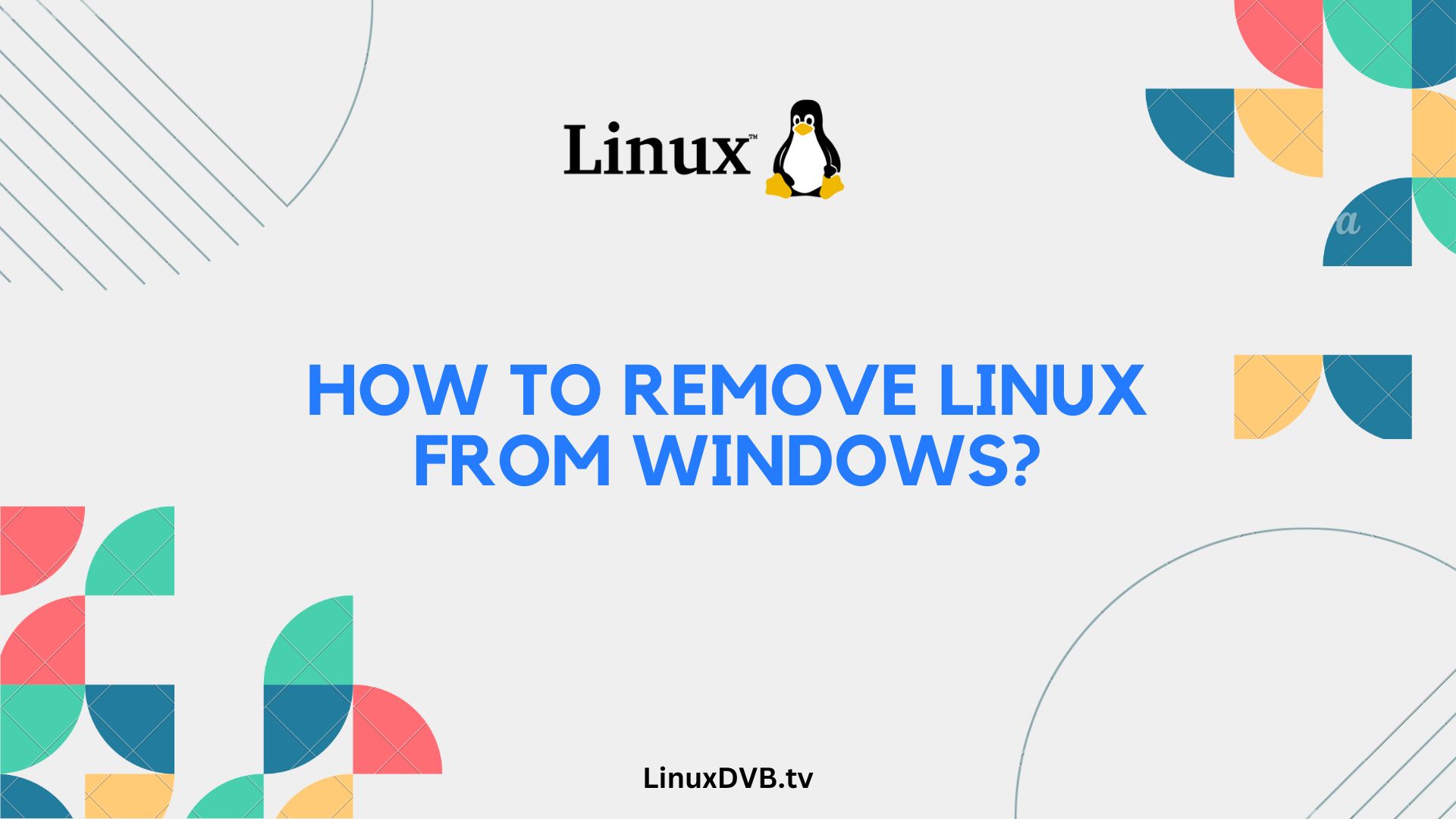Introduction
If you’ve ever installed Linux alongside your Windows operating system and now want to bid farewell to the penguin, you’re in the right place. Removing Linux from Windows may seem like a daunting task, but fear not. In this comprehensive guide, we’ll take you through the process step by step. By the end of this article, you’ll have a Windows-only system once again. So, let’s dive in!
Table of Contents
How to Remove Linux from Windows?
Understanding the Dual-Boot Setup
Before we embark on the removal process, it’s essential to grasp the concept of a dual-boot system. This knowledge will help you make informed decisions throughout the process.
Backing Up Your Data
The first rule of any major system change is to back up your data. We’ll guide you on how to safeguard your files and documents before proceeding.
Creating a Windows Recovery Disk
To safely remove Linux, you’ll need a Windows recovery disk. Learn how to create one, as it’s a crucial step in the process.
Accessing the Windows Recovery Environment
Booting into the Windows Recovery Environment is the next step. We’ll show you how to access this environment with ease.
Using Disk Management
Disk Management is your go-to tool for deleting Linux partitions. We’ll explain how to use it effectively.
Removing Linux Partitions
Here’s where the magic happens. Learn how to identify and remove Linux partitions from your system.
Fixing the Windows Bootloader
After removing Linux, your Windows bootloader may need some attention. We’ll guide you on how to repair it.
Reclaiming Space
With Linux gone, you’ll have unallocated space on your hard drive. Discover how to reclaim it for Windows.
Cleaning Up Grub
Linux often leaves remnants behind. We’ll show you how to clean up any lingering Grub traces.
Verifying Windows Integrity
Ensure that your Windows installation is intact and error-free. We’ll provide tips on verifying its integrity.
Testing Your System
Before celebrating, it’s wise to test your Windows system thoroughly. Learn how to do it right.
FAQs
Can I remove Linux without losing my Windows data?
Absolutely! We’ll guide you through the process to ensure your Windows data remains intact.
Will removing Linux affect my Windows performance?
No, removing Linux will not impact your Windows performance. In fact, it might even improve it.
What if I want to install Linux again in the future?
We’ve got you covered. We’ll briefly explain how to install Linux again if you change your mind.
Is it possible to remove Linux from a Mac?
This guide focuses on Windows, but similar principles apply to Mac systems.
Can I seek professional help for this process?
Of course! If you’re uncomfortable with any step, it’s always a good idea to consult a professional.
Will my computer be faster after removing Linux?
While the removal itself won’t make your computer faster, it can free up disk space, potentially improving performance.
How to remove Linux from Windows?
You can remove Linux from Windows by deleting the Linux partition using a disk management tool like Disk Management or third-party software.How to delete Linux from Windows?
Deleting Linux from Windows involves removing the Linux partition from your hard drive using a disk management tool.How to uninstall Linux OS?
To uninstall Linux OS, you need to delete the Linux partition and remove the associated bootloader entries using tools like Disk Management or Boot Repair.Conclusion
Congratulations! You’ve successfully removed Linux from your Windows system and regained full control. We hope this guide has been informative and helpful. Remember, if you ever decide to dive back into the world of Linux, the option is always there. For now, enjoy your Windows-only experience.

